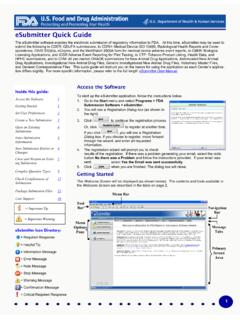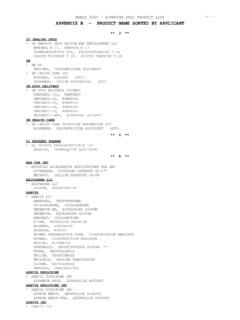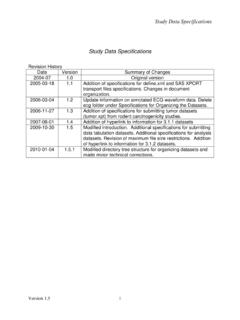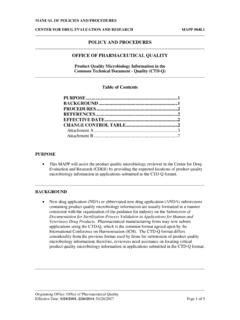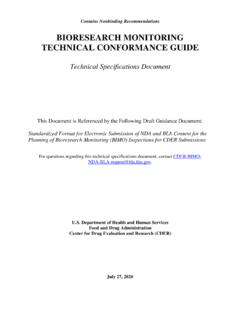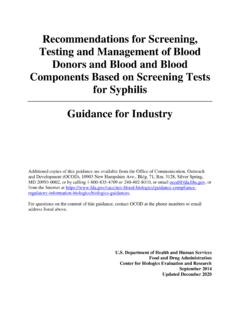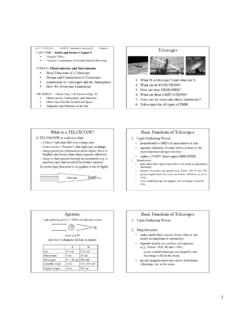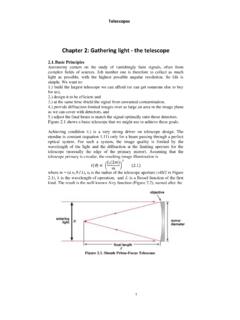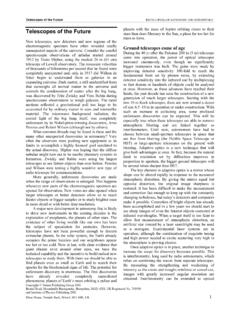Transcription of FDA Approves Implantable Telescope
1 Focus on low vision Helene D. Clayton-Jeter, OD FDA ApprovesImplantable Te l e s c o p e On July 1, the food and drug administration (FDA) announced the approval of the Implantable Miniature Telescope (IMT), manufactured by VisionCare Ophthalmic Technologies, Inc., of Saratoga, Calif., for the improvement of vision in some patients with end-stage, age-related macular degeneration (AMD). The original application in 2006 was not approved because of safety concerns. AMD affects about 8 million peo ple in the United States, 2 million of whom already have signif icant vision loss, according to the National Eye Institute.
2 VisionCare Ophthalmic Te c h n o l o g i e s c i t e s a p o t e n t i a l U. S . market of 750,000. DEVICE DETAILS The IMT device is a small tele scope surgically implanted in the posterior chamber of the eye, in place of the eye s crystalline lens, and held in position by haptic loops. The size of a pea, it provides an image that has been magnified more than two times by incorporating wide-angle micro-optics. The Telescope works by directing light from the lens Age-related macular degeneration robs its victims of their central vision onto still-functioning portions of the retina to improve vision. The IMT is designed to improve distance vision with the use of spectacles where needed, but near vision is only achieved when reading glasses or bifocals are used.
3 Av a i l a b l e i n t wo m o d e l s 2 . 2 a n d times magnification it is designed to magnify and project images onto a healthy portion of the retina and is intended to be implanted in only one eye. The non-implanted eye is used for peripheral vision. The IMT is used in patients who are 75 and older with stable severe to profound vision impairment (best corrected visual acuity of 20/160 20/800 and unchanged vision impairment over time) caused by blind spots (bilateral central scotoma) associated with end-stage AMD. Eligible patients also must have a minimum endothelial cell density of 2,000 cells/mm2 if they are age 75 to 84 and 1,800 Study Results In a 219-patient, multicenter clinical study of the IMT: 90% of patients achieved at least a two-line gain in either their distance or best-corrected visual acuity, and 75% improved from severe or profound impairment to moderate.
4 [34] NOVEMBER 2010 Follow-Up As a condition of FDA approval, the manufacturer must conduct two post-approval studies. In one study, VisionCare Ophthalmic Technologies must continue long-term follow-up from its original 219-patient pivotal trial for an additional two years. Another study of 770 newly enrolled subjects will include an evaluation of the endothelial cell density and related adverse events for five years after implantation. cells/mm2 for age 85 and over. ACCEPTANCE OF RISK Because it is a large device, implantation can lead to extensive loss of corneal endothelial cells, the layer of cells essential for maintaining the clarity of the cornea, and chronic endothelial cell loss.
5 Significant losses in endothelial cell density may lead to corneal edema, corneal decompensation, and the need for corneal transplant. Detailed labeling, including an Acceptance of Risk and Informed Decision Agreement, must be completed prior to implantation. PATIENT TRAINING Prior to implantation, patients agree to undergo training with a low vision specialist on using an external Telescope . This training is used to determine whether vision improvement with the external Telescope can be obtained and to verify if the patient has adequate periph eral vision in the eye that would not be implanted. Patients also agree to participate in a post-operative vision rehabilitation program.
6 Despite the risk of developing corneal edema four or five years later, many elderly patients may choose the Telescope to carry out daily tasks such as recognizing faces and reading books. Jeff Shuren, the FDA Center for Devices and Radiological Health Director, says that, despite associated risks, this innovation has the potential to provide many people with improved quality of life. EB Helene D. Clayton-Jeter, OD, is a Health Programs Coordinator in the FDA Office of Special Health Issues. She acknowledges the help of Don Calogero, MS, Biomedical Engineer, and Bernard Lepri, OD, MS, MEd, Office of Device Evaluation, Center for Devices and Radiological Health.
7 [36] NOVEMBER 2010
